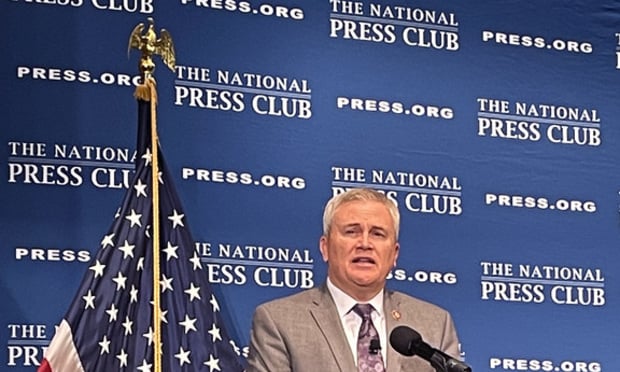New year, new regulations, new trends—the retirement industry is going to be a busy place in 2018.
As plan sponsors, providers and advisors focus on industry and regulatory changes, and the expanding need to help employees with meaningful retirement preparedness, certain actions will likely come to the fore among a growing number of stakeholders.
The Institutional Retirement Income Council, a think tank for the retirement income planning community, expects that among all the strategies that play a part in retirement planning, some more than others will be under consideration as plan sponsors and other industry stakeholders work to better their approach to retirement planning for workers.
Recommended For You
"There will be no shortage of issues this coming year that will grab the attention of all retirement industry stakeholders, including retirement plan sponsors, providers and advisors," Bob Melia, executive director of IRIC, says in a statement.
Melia adds, "From the ongoing interest among plan sponsors to help workers with their financial well-being to a host of fiduciary and legislative developments, 2018 will be a critical year as the industry looks for ways to enhance their ability to provide workers with a path to a financially secure retirement."
These are the trends IRIC expects to rise in importance as the industry seeks a range of opportunities to help workers improve their financial well-being and retirement readiness:
6. In-plan retirement income solutions.
One major issue confronting workers as they plan and save for retirement is the need to make their retirement savings translate into adequate income.
The decline of defined benefit plans, with their formerly reliable income, in favor of 401(k) plans and other defined contribution vehicles that were never designed to replace pensions, has made tough for workers to do; few plans currently offer an income option.
But that could be changing. IRIC expects that "in-plan retirement income solutions will continue to evolve this year with a goal of providing retirement plan participants with more flexibility."
In fact, it says that with a growing number of plan sponsors offer financial well-being programs to help employees boost their retirement readiness, "offering plan participants options such as in-plan retirement income solutions will be a critical component."
Plan sponsors that haven't recently considered such a move "will be more inclined to do so this year as new solutions emerge."
IRIC adds, "Plan sponsors have a fiduciary duty to review offered investments on an ongoing basis. As the aging of the population impacts the work force, we expect sponsors to place more emphasis on the distribution of assets over time."
5. De-accumulation strategies.
It's no secret that American workers don't do very well at planning how to withdraw funds from retirement plans in ways that will be most advantageous to them.
Such requirements as required minimum distributions often remain a mystery until well into retirement, when retirees taking RMDs in the wrong way can see a lot of their hard-earned savings disappear in taxes and perhaps even penalties.
So IRIC expects that guaranteed and nonguaranteed de-accumulation products and strategies are likely to have a place in the year to come, with plan sponsors and other industry stakeholders cognizant of the positive impact they can have on overall retirement security and readiness.
Another expectation is that "de-accumulation strategies will be developed more holistically from a participant's perspective with factors such as Social Security elections and outside assets including home values considered." And that likely means that one-size-fits-all is not a valid strategy.
In fact, it says that "[p]lan sponsors, service providers and consultants that want to retain large retirement assets within the DC system will consider implementing multiple de-accumulation strategies."
4. Tax law and retirement savings.
IRIC expects that the new tax law could offer the chance for 401(k) plan participants to save more in their retirement plans.
It also points out "an ideal opportunity for plan sponsors, providers and consultants to rethink strategies around offering Roth features and educate participants on the retirement readiness effects of Roth."
The industry is also likely to be in for a study period on ramifications of the new law, to try to determine how it will affect retirement plan strategies and the industry itself.
3. Fiduciary risk.
Fiduciary risk, always a worry, "has had a dampening effect on innovation, new retirement income products, and alternative investments," says IRIC.
That's meant that consultants have been reluctant to offer too much in the way of innovation, particularly with the potential for lawsuits hanging over their heads.
However, IRIC says, "helpful fiduciary guidance by the Departments of Labor and Treasury regarding annuities and other income products will help plan sponsors add retirement income strategies to their retirement plans."
In addition, proposed legislation, like the Retirement Enhancement and Savings Act, could also encourage not just lifetime income, but also other retirement security proposals.
2. Fiduciary rule.
When the Department of Labor decided to implement only part of the fiduciary rule, leaving other components in the limbo of delay, "consumed consultants, their business models and other sectors of the industry," IRIC says.
And while waiting for the final implementation, we could see changes from the SEC, which has already said it wants to put in place new regulations on standard of care, affecting the DOL rule's final composition.
"For consultants," IRIC says, "the rule and the integration of the SEC could bring further changes to business models and a continuation of the merger activity we saw in 2017."
1. Market conditions and correction.
A nine-year-long bull market could present some real challenges to plan participants if instead of continuing to soar, it corrects in its tenth year.
Even canny participant investors could be challenged beyond their abilities in the face of a market correction, which could—along with steady or rising interest rates—sap even well-diversified portfolios.
Participant reactions to that kind of market environment could push plan sponsors to rely more heavily on stable value contracts, insurance products such as deferred annuities and guaranteed income benefits, alternative funds, real asset funds and holdings of certain financial sector funds.
© 2025 ALM Global, LLC, All Rights Reserved. Request academic re-use from www.copyright.com. All other uses, submit a request to [email protected]. For more information visit Asset & Logo Licensing.













